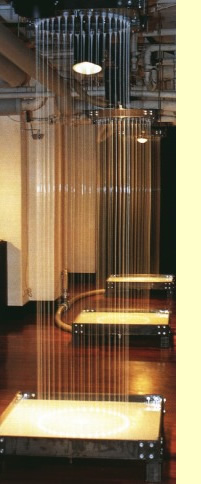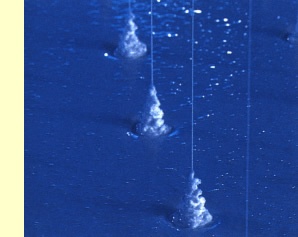Silicones are not only outstanding engineering materials and composites. They also inspire well-known artists to produce memorable works. One of them is the Japanese Yoshiyuki Miura, who exhibited his work of art "liquid space" in the entrance hall of WACKER’s head office in Munich. Principal ingredient of his dynamic objects is silicone fluid. It flows in delicate columns from the ceiling. When it lands in the collecting basin, it curls up into tiny turrets and is pumped back up again. Variations in the column arrangement as well as lighting effects create a wide variety of impressions, as can be seen in the following pictures:
|
||||||||||||
|
||||||||||||




